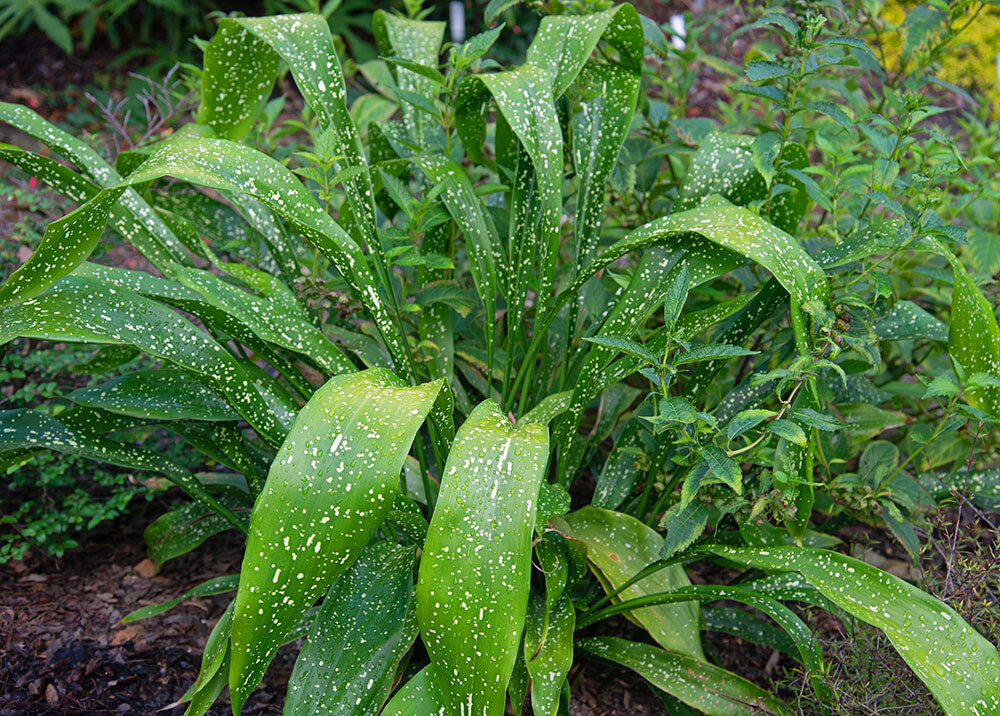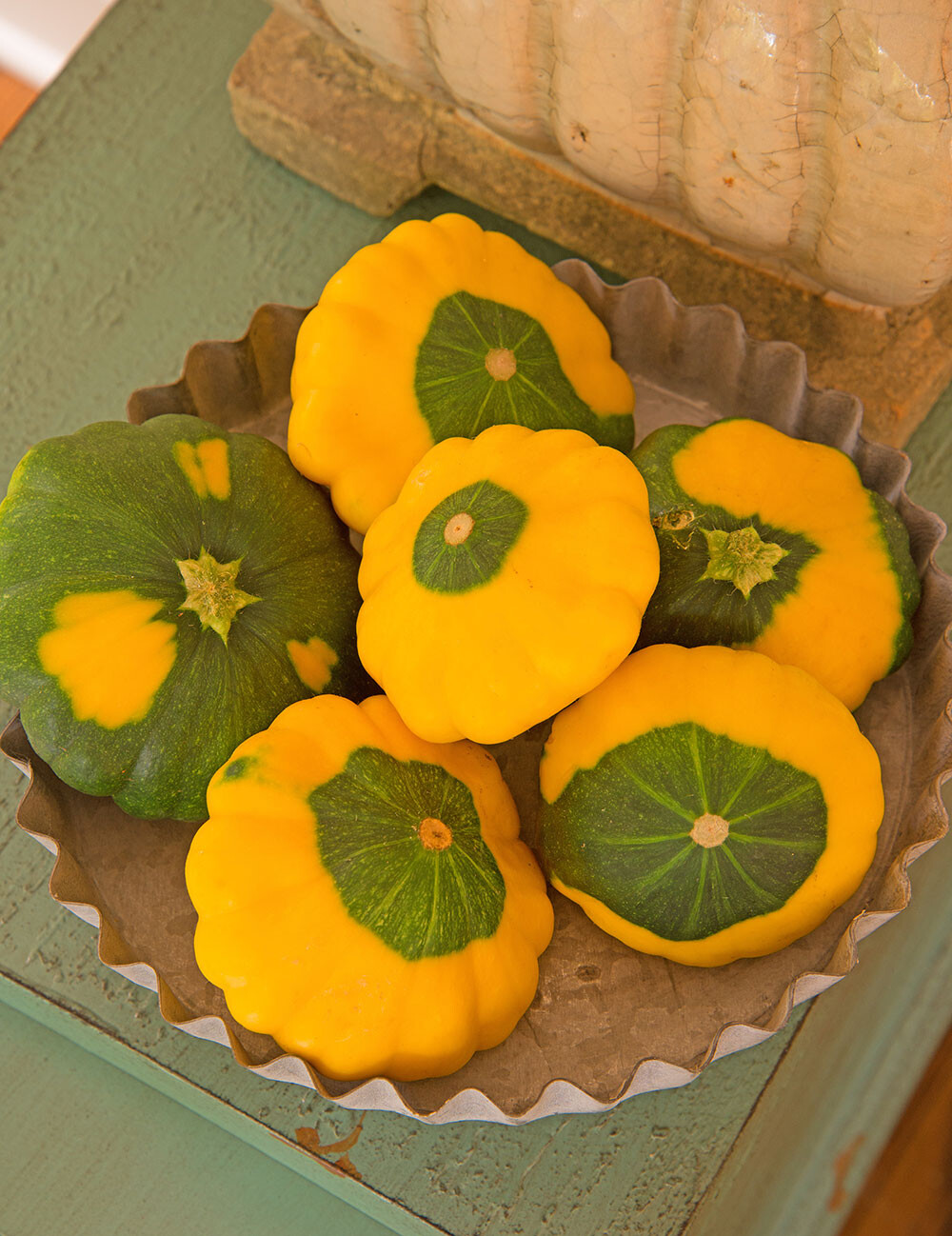Veteran vegetable gardeners will tell you that summer squash is an easy edible to grow, whether you start from seeds or purchase young plants. But opinions split over the best type to try. Crook-neck connoisseurs stand by their squash, while straight-laced straight-neck growers disagree. Then, there’s the zucchini zealots just waiting their turn.
I’ve grown and enjoyed all three, but if asked for my favorite, I would check the “None of the Above” box. Instead, the squash that has turned my head and tingled my taste buds for years is a lesser-known delight: patty pan.
Patty pan squash — also called scalloped squash — takes the prize for weird summer squash looks because it is flat, round, and has wavy edges, like Grandma’s pies or a flying saucer.
It is easy to think such an odd squash must be a 21st century genetically modified Franken-veggie, but patty pan was actually an easy find in Colonial America, with the heirloom ‘Early White Bush’ variety common in 18th century vegetable patches.
‘Early White Bush’ is still readily available today, but it has competition for garden space from newer cultivars such as ‘Peter Pan,’ an All-American Selections winner producing squash awash in a pleasing green hue. Want snazzier? ‘Sunburst’ (another AAS winner) shines in sizzling yellow cooled by splotches of rich green.
This unusual squash is grown the usual squash way, with mid-April being a good time to start planting patty pan. But first, gardeners, prepare thy soil! Pick a sunny, well-draining site and turn over the dirt, mixing in gobs of organic matter such as compost, rotted manure, or enriched commercial topsoil. To allow sunshine to continue warming up the growing ground, hold off on mulching the site until mid-May.
Patty pan plantings should be spaced about 2 to 3 feet apart. If you keep this strange squash healthy and happy, expect to begin the harvest in a little over a month for set plants and about two months if grown from seed. For the best flavor, pick the patty pans when they are about 3 to 4 inches in diameter.
To me, patty pan tastes just a tad sweeter than other squash. I have also found it to be a very versatile veggie because, whether sautéed, grilled, fried, or steamed, it’s a treat. There are plenty of tempting recipes to be found online, too, with many hollowing out the centers and refilling with goodies such as onions, mushrooms, cheese, herbs, or bacon. Yummy!

Spring pruning can help keep cast iron plants such as this ‘spektacular’ selection looking spectacular.
Cast iron plant (Aspidistra sp.) is as advertised: a tough evergreen perennial that can provide a constant verdant color to shady areas, even in winter. However, cold, arid winds can dry leaves to the point they become ragtag with streaks of brown splotches. Such damaged foliage can be pruned out early this month to perk up this handsome plant. In fact, if the entire clump of your established cast iron plant looks worn, go ahead and clip all the old leaves down to about 2-inch nubs. Such a severe pruning will encourage new foliage to come roaring back by midsummer
To Do in the Garden
April
- Along with patty pan and typical squash types, the middle of this month is also a good time plant other summer edibles such as lima beans, cucumbers, green beans, peppers, and tomatoes.
- Can’t wait until the middle of this month to get growing in the veggie patch? Early April works for planting cool-season goodies such as Swiss chard, spinach, radishes, mustard greens, leaf lettuce, leeks, kale, and collards.
- If you noticed an established daffodil bed has begun to sputter with its spring flower shows over the last few years, it could be a classic case of overcrowded plants. Let their leaves wither and turn brown before clipping them back. Then, wait until July to dig up, separate, and replant the dormant bulbs farther apart.
- Your fine-feathered garden friends will be working overtime with spring activities this month, so don’t forget to clean the birdbath and refill it with fresh water at least once a week.
- 2024 Maggy Awards: Shopping
- 2024 Maggy Awards: Services
- 2024 Maggy Awards: Lifestyle
- 2024 Maggy Awards: Restaurants
- The 2024 Maggy Awards: Western Wake’s Most Wanted
- Garden Adventurer: The Edible Oddity: Patty Pan Squash
- Liquid Assets: Kiwis Fly North
- Liquid Assets: Reifenberg
- Restaurant Profile: SAAP Laotian Restaurant
- Nonprofit Spotlight: True ABAlities Preparatory School (TAPS)
- Boomtown: Apex Turns 150
- Erica Chats: Feeling Stuck?
- On Trend: Modern Caricatures
- Small Business Spotlight: Cary Dance Productions
- Pursuing Greatness
- Things to Do: April 2024







